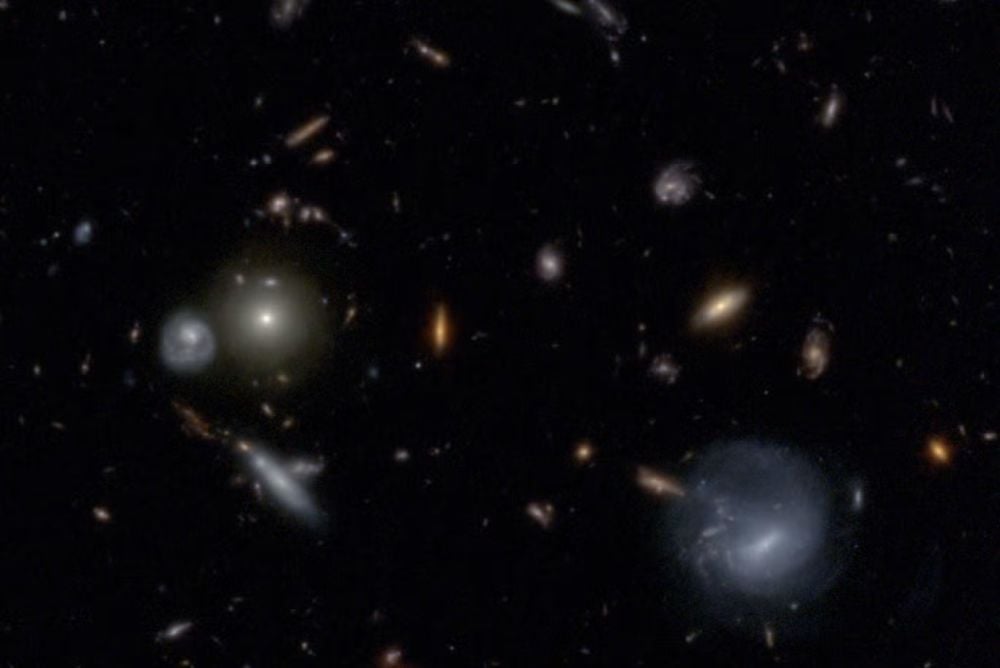The James Webb Space Telescope (JWST) is embarking on a new initiative, the MINERVA program, aimed at enhancing our understanding of the Universe’s formative years during a period known as the Cosmic Dawn. This program seeks to address the challenges posed by cosmic dust, which can obscure critical astronomical observations and mislead researchers about the age and composition of distant galaxies.
Astronomers often face significant hurdles when studying ancient galaxies, as dust can mimic redshift, making younger galaxies appear older. The JWST was designed to penetrate these obstacles and provide clearer insights into the early Universe. MINERVA, which stands for Medium-band Imaging with NIRCam to Explore ReVolutionary Astrophysics, will reinvestigate galaxy fields previously observed by the JWST, utilizing new wavebands to enhance the clarity and depth of these observations.
Unlocking Hidden Galaxies
The MINERVA program is detailed in a recent research article titled “MINERVA: A NIRCam Medium Band and MIRI Imaging Survey to Unlock the Hidden Gems of the Distant Universe.” Led by Adam Muzzin from York University, with support from Danilo Marchesini, a professor of physics and astronomy at Tufts University, the project aims to combine the capabilities of the Mid-Infrared Instrument (MIRI) and the Near Infrared Camera (NIRCam). This combination is expected to generate a more refined dataset than either instrument could achieve alone.
By leveraging approximately 387 hours of observing time, MINERVA will focus on four specific extragalactic fields: UDS, COSMOS, AEGIS, and GOODS-N. These fields have been previously examined by the JWST but not with the same depth that MINERVA intends to achieve. The high demand for JWST observing time underscores the significance of this initiative, as such comprehensive datasets are currently scarce.
The authors of the study emphasize the importance of high-quality multi-wavelength imaging in understanding galaxy formation. They note, “High-quality multi-wavelength imaging has been essential in nearly all major breakthroughs in the modern study of galaxy formation.” MINERVA intends to create a multi-wavelength photometric catalog that will facilitate spectroscopic follow-ups for decades, advancing our understanding of the cosmos.
Searching for the Universe’s First Galaxies
The primary goal of MINERVA is to identify rare and unusual galaxies obscured by dust. As Marchesini explains, “The area is important because we’re also after rare objects. You need to sample a larger volume of the universe to find very exciting, rare objects, especially those that formed in the first billion years of cosmic history.” This includes the search for galaxies that emerged within 300 million years after the Big Bang, or at a redshift greater than 13.
This epoch, known as the Cosmic Dawn, marks a significant transition in the Universe’s evolution. Before the formation of the first stars, the Universe was predominantly composed of neutral hydrogen. The Cosmic Dawn is characterized by the emergence of stars, galaxies, and even black holes, laying the foundation for the galaxies and structures we observe today. Understanding this period is crucial for testing theories about fundamental physics, such as dark matter and dark energy.
MINERVA will also address one of the JWST’s earlier findings—the detection of Little Red Dots (LRDs). These small, red-hued cosmic objects are believed to date back to just 600 million years after the Big Bang, but their exact nature remains uncertain. The prevailing hypothesis is that they represent a new class of primordial galaxies that harbor supermassive black holes and active galactic nuclei.
“MINERVA certainly will enable us to identify little red dots in a much more robust way,” said Marchesini. The program aims to clarify the evolution and density of these intriguing objects, enhancing our understanding of how supermassive black holes developed in the early Universe.
MINERVA commenced its observations on July 25, 2023, and is expected to run for approximately one year. Upon completion, the program will contribute significantly to the treasury of deep field imaging datasets, improving population studies and facilitating future spectroscopic investigations.
As the JWST continues to unveil the hidden aspects of our Universe, the MINERVA initiative stands poised to shed light on the early cosmos, deepening our comprehension of celestial formation and evolution.





































































